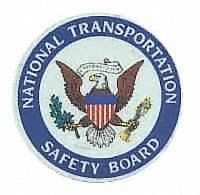But Removes Airplane Fuel Tank Flammability Concerns
 The National Transportation Safety
Board issued its 2009 Federal Most Wanted List of safety
improvements on Tuesday. Improvements to EMS flight operations were
among the list of newly-added areas of concern for the aviation
community... while aircraft fuel tank flammability was removed from
the list.
The National Transportation Safety
Board issued its 2009 Federal Most Wanted List of safety
improvements on Tuesday. Improvements to EMS flight operations were
among the list of newly-added areas of concern for the aviation
community... while aircraft fuel tank flammability was removed from
the list.
"Our Most Wanted List, which was created in 1990, was designed
to raise the public's awareness and support for transportation
safety issues," said NTSB Chairman Mark V. Rosenker. "The safety
issues on this list are critical to improving transportation
safety. When acted upon, these recommendations will reduce
accidents and save lives."
The Board added Improve the Safety of Emergency Medical Services
(EMS) Flights. The Board believes that a concerted effort
must be made to improve the safety of emergency medical services
flights. In 2006, the Safety Board issued a special investigation
report addressing the safety issues involved in these operations.
Although the Board has issued recommendations to improve EMS
safety, the Federal Aviation Administration (FAA) has not
implemented the changes. In the last 11 months, there have been 9
EMS accidents resulting, in 35 fatalities.
Improve Runway Safety - In the last two decades, the Safety
Board has issued numerous safety recommendations addressing this
issue and believes that implementing a safety system for ground
movement with direct warnings to flight crews will improve runway
safety. Another recommendation in this issue area would require
pilots to conduct landing distance assessments before every landing
based on existing performance data, actual conditions, and
incorporating a minimum safety margin of 15 percent. Also, a new
recommendation was added to this subject area that would provide
pilots with information or alerts in the cockpit regarding
attempted takeoffs from a taxiway or the wrong runway.
Reduce Dangers to Aircraft Flying in Icing Conditions -Actions
need to be taken to improve flight safety in icing conditions. The
FAA has yet to complete efforts to revise icing certification
criteria, testing requirements, and restrictions on operating in
icing conditions. A recommendation added this year on deice boots
addresses a widely held, but incorrect, belief that activation of
deice boots be delayed rather than started immediately upon
entering icing conditions.
Require Image Recorders - Conventional cockpit image recorders
(CVR) and flight data recorders (FDR) do not show the initial
cockpit environment leading up to a crash. Image recording systems,
a supplement to the CVR and FDR that are currently on large
aircraft - and that could be retrofitted on smaller planes that do
not have voice recorders - would provide critical information about
the actions inside the cockpit and immediately before and during an
accident.
The Board removed the area Eliminate Flammable Fuel/Air Vapors
in Fuel Tanks on Transport Category Aircraft from the list. On July
21, 2008, The Federal Aviation Administration published a final
rule titled "Reduction of Fuel Tank Flammability in Transport
Category Airplanes." The rule requires fuel/air mixtures in all
fuel tanks to be below a prescribed flammability level for all
newly manufactured aircraft that have more than 30 seats, as well
as modifications to passenger-carrying aircraft manufactured after
January 1, 1992.
The Board kept the issue Improve Crew Resource Management
Training for on-demand Part 135 carriers on the list with no
changes.
 NTSB Final Report: Dehavilland DHC-2 MK 1
NTSB Final Report: Dehavilland DHC-2 MK 1 Aero-News: Quote of the Day (10.29.25)
Aero-News: Quote of the Day (10.29.25) ANN's Daily Aero-Linx (10.29.25)
ANN's Daily Aero-Linx (10.29.25) ANN's Daily Aero-Term (10.30.25): Minimum Friction Level
ANN's Daily Aero-Term (10.30.25): Minimum Friction Level ANN's Daily Aero-Linx (10.30.25)
ANN's Daily Aero-Linx (10.30.25)



